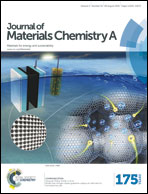Ultrasmall nanoparticles and pseudo-single atoms of platinum supported on fibrous nanosilica (KCC-1/Pt): engineering selectivity of hydrogenation reactions†
Abstract
Fibrous nanosilica (KCC-1) supported ultrasmall platinum (Pt) nanoparticles (KCC-1/Pt) were prepared as novel nanocatalysts for hydrogenation reactions. The catalysts displayed high activity for the hydrogenation of 3-nitrostyrene with extraordinary selectivity. KCC-1-PEI/Pt (1%) was specifically found to be selective towards reduction to 3-vinylaniline, whereas 10% and 5% Pt loaded on KCC-1-PEI showed high activity and selectivity towards 3-ethylaniline. The role of platinum nanoparticle size on the selectivity of the catalysts was studied. We observed that catalysts with sub-nanometer Pt or pseudo-single atoms of Pt showed excellent selectivity, which decreased drastically with increase in particle size. Although most catalysts offer good activity or selectivity, these KCC-1 based catalysts offer both high activity and selectivity. The reaction proceeded smoothly at room temperature and KCC-1/Pt nanocatalysts showed a wide substrate scope for hydrogenation reactions under mild conditions, making protocols green and sustainable.



 Please wait while we load your content...
Please wait while we load your content...